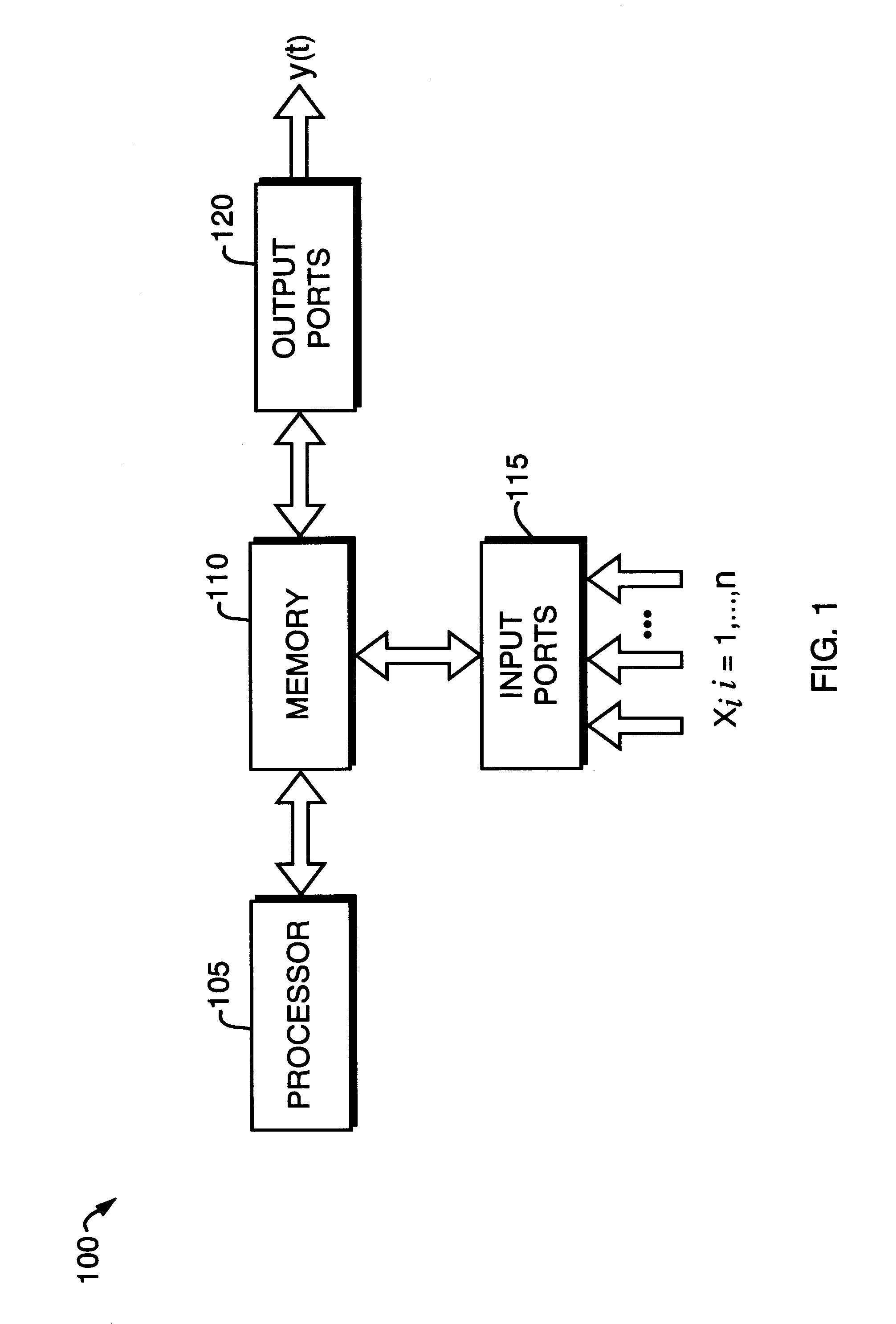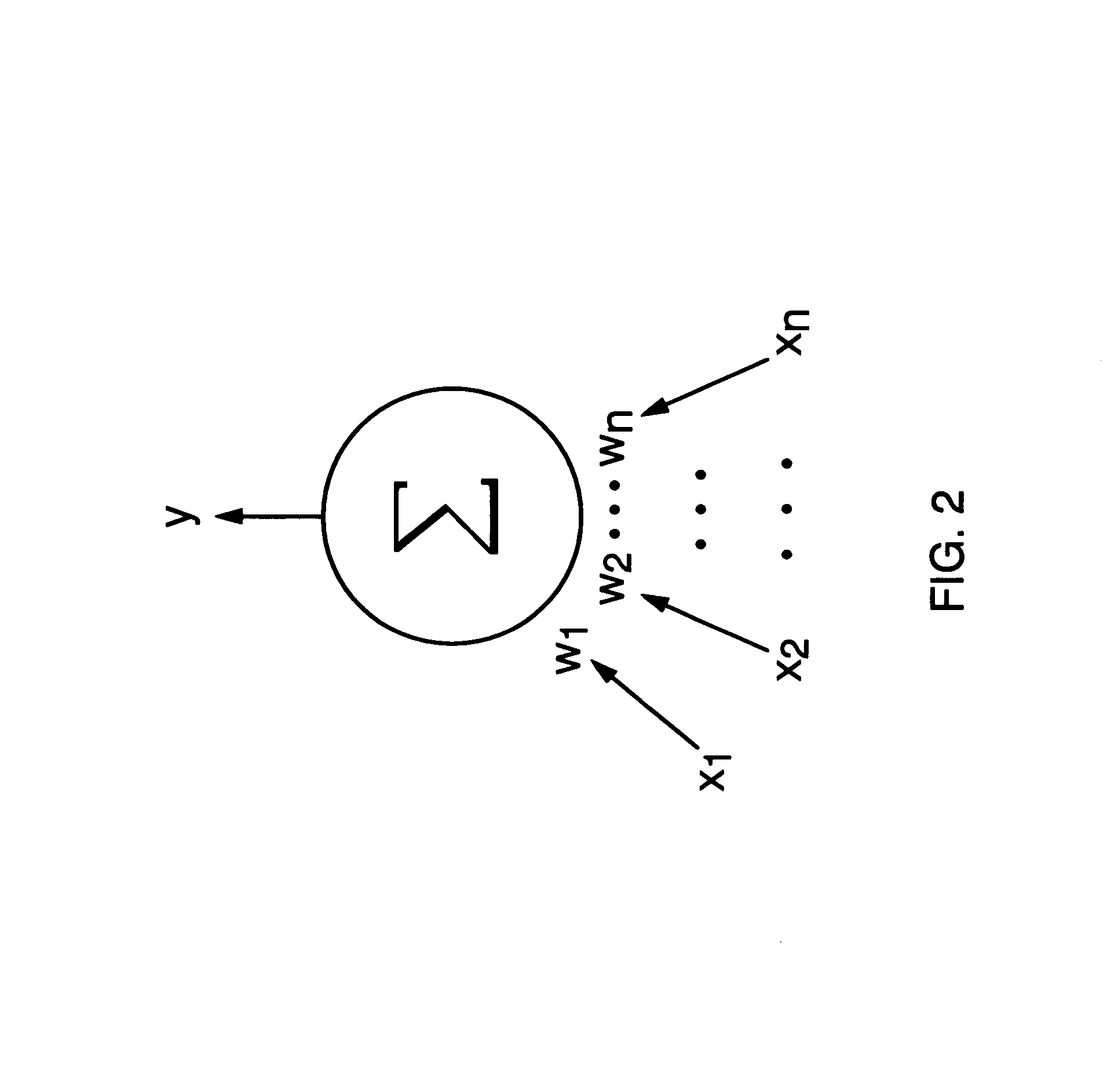Method and apparatus for machine learning
- Summary
- Abstract
- Description
- Claims
- Application Information
AI Technical Summary
Benefits of technology
Problems solved by technology
Method used
Image
Examples
Embodiment Construction
The capabilities of the instant K1 method for a linear combination of inputs were assessed using a series of tracking tasks--supervised-learning or concept-learning tasks in which the target concept drifts over time and is to be tracked. Non-stationary tasks are more appropriate here than conventional learning tasks because we are trying to assess the K1 method's ability to learn biases during early learning and then use them in later learning. To study this one needs a continuing learning problem, not one that can be solved once and is then finished.
The task involved 20 real-valued inputs and one output. The inputs were chosen independently and randomly according to a normal distribution with mean zero and unit variance. The target concept was the sum of the first five inputs, each multiplied either by a weight, i.e.
y.sup.* =s.sub.1 x.sub.1 +s.sub.2 x.sub.2 +s.sub.3 x.sub.3 +s.sub.4 x.sub.4 +s.sub.5 x.sub.5 +0x.sub.6 +0x.sub.7 + . . . +0x.sub.20,
where all the s.sub.i are continuous...
PUM
 Login to View More
Login to View More Abstract
Description
Claims
Application Information
 Login to View More
Login to View More - R&D
- Intellectual Property
- Life Sciences
- Materials
- Tech Scout
- Unparalleled Data Quality
- Higher Quality Content
- 60% Fewer Hallucinations
Browse by: Latest US Patents, China's latest patents, Technical Efficacy Thesaurus, Application Domain, Technology Topic, Popular Technical Reports.
© 2025 PatSnap. All rights reserved.Legal|Privacy policy|Modern Slavery Act Transparency Statement|Sitemap|About US| Contact US: help@patsnap.com



